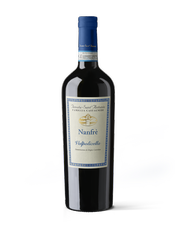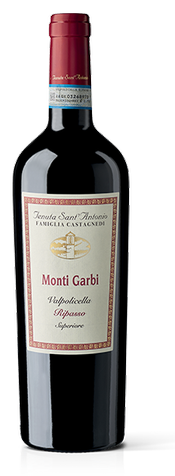Tenuta Sant’Antonio, Valpolicella “Nanfre” 2018 ($15) and
Valpolicella Superiore Ripasso “Monti Garbi” 2017 ($20, both imported by Dalla Terra Winery Direct): I recently attended a live video seminar with Armando Castagnedi, owner of Tenuta Sant’Antonio, a family-owned winery in the Valpolicella district of the Veneto region, in northeastern Italy. Armando presented a range of his wines, from the region’s most basic appellation, Valpolicella DOC, to Valpolicella Ripasso DOC, and the region’s pride,

Amarone della Valpolicella DOCG. To no one’s surprise, the three Amarone wines stole the show. What may be surprising, though, is that I ultimately decided to feature the other two wines — the youngest, least expensive wines — in this column.
Amarone is an unusual wine because it is made entirely from partially dried grapes. After harvest, whole benches of fresh grapes dessicate as they rest at the winery usually for about three months before they are finally pressed and their juice is fermented on the skins. The process is a traditional one in that region but the wine, Amarone, has existed for less than seventy years. Italian wine afficianados and collectors generally rank Amarone as one of Italy’s finest red wines.
Amarone is an extreme wine: very full-bodied, very high in alcohol, richly textured and usually not without some sweetness, a powerful wine less suited to drinking with meals than sipping after dinner with cheese. A
vino da meditazione, the Italians call it. These days, of course, some wine drinkers favor this style of wine and do drink ripe, powerful red wines with meals.
I am not one of those wine drinkers. I have always found Amarone to be fascinating but superfluous. I recognize that the three Amarones of Tenuta Sant’Angelo are all excellent, and I have contributed tasting notes for them in the Wine Reviews section of this site. Here I’ll discuss instead the two “minor” wines from the region.
Basic Valpolicella is a normal wine in the sense that it is made from the juice of fresh grapes. The grapes are local varieties, mainly Corvina and Rondinella. Valpolicella is traditionally a light-bodied, unoaked red wine with moderate tannins and aromas/flavors of red cherry and rosé. But you rarely find it in that style. As the whole wine world has leaned into richer, riper wines — and as the success of Amarone has shaken the Valpolicella region — producers have been making their basic Valpolicella in riper, fuller styles. That’s why I love Tenuta Sant’Angelo’s Valpolicella “Nanfre” — it is a throwback to the traditional style but finer than the wine has traditionally been.
The
2018 Valpolicella “Nanfre” ($15) is a dry, light-bodied, fruity red with soft texture, only a medium amount of tannin, and pronounced aromas of red cherry, cherry jam and floral accents, with just the most fleeting suggestion of candied cherry. I don’t recall ever having such an aromatic Valpolicella. It is a charming wine and its quality is high, as evident in an acid-tannin structure that supports the fruitiness, its decent concentration of fruit for a light-bodied wine, and quite a long finish. The finish carries a telltale bitter almond notes, which is more pleasant than it sounds. Light wines generally do not garner high scores, but upon consideration, I rate the wine at 90 points.
Regular Valpolicella production has declined drastically as the success of Amarone has grown, because producers have designated more of their grapes for the more lucrative Amarone production instead. (A regulation now prohibits producers from dedicating more than 70 percent of their grapes to Amarone.) Another factor in the near demise of basic Valpolicella is the emergence of the ripasso method and the increased production of ripasso-style Valpolicellas. These wines start with fresh fruit and a normal fermentation, but then the young, dry wine is mixed with some unpressed grape skins taken from the end of an Amarone fermentation (because every producer makes Amarone). The skins have residual sugar and yeasts on them, and their presence incites a further fermentation that brings more color, flavor, alcohol and tannin to the normal Valpolicella. This richer style of Valpolicella wine became so popular that in 2010 it became a freestanding DOC wine, no longer just a variation of basic Valpolicella.
Tenuta Sant’Antonio’s “Monte Garbi” 2017 ($20) is a Valpolicella Ripasso with the added designation of Superiore indicating the grapes attained at least 13 percent potential alcohol rather than the 12.5 percent minimum. It is a

medium-plus bodied, dry red wine with weight and substance, and a medium amount of grippy tannin. It’s a bit like a light Valpolicella but with more stuffing and a rounder mouthfeel. However, in my opinion, as welcome as the added weight and substance are to most wine drinkers, they come at the expense of the wine’s aromatics. Instead of all that charming fresh cherry fruit, the ripasso process has resulted in notes of stewed cherries and plums, dry herbs, and mineral notes. A vague floral note still exists but the aromas and flavors of this wine are dense and subsumed, at least for now, by the wine’s substantial structure, which includes some oak tannin from aging in 500-liter French oak casks, 30 percent new.
Of course the ripasso process is just one of many production differences that exist between these two wines. Others include 20 percent lower yields, vineyards on soil that contains some limestone, the inclusion of Corvinone (unrelated to Corvina, but a useful, more tannic blending partner), Osoleta and Croatina grapes, and oak aging. But the introduction of dried fruit seems to set the wine on the road to being more structured and less aromatic, certainly less fresh-fruity. This effect culminates in the Amarones, made entirely from partially dried fruit.
I would happily drink this Monte Garbi Ripasso, and I would choose it over the Nanfre when my meal calls for a somewhat substantial red wine. But when the fare is light, or when I’m sipping a red wine without food, or if I ever again attend a large party, I will grab the Nanfre.
Tenuta Sant’Antonio Valpolicella “Nanfre,” 2018 – 90 Points
Tenuta Sant’Antonio Valpolicella Ripasso, “Monte Garbi,” 2017 – 91 Points